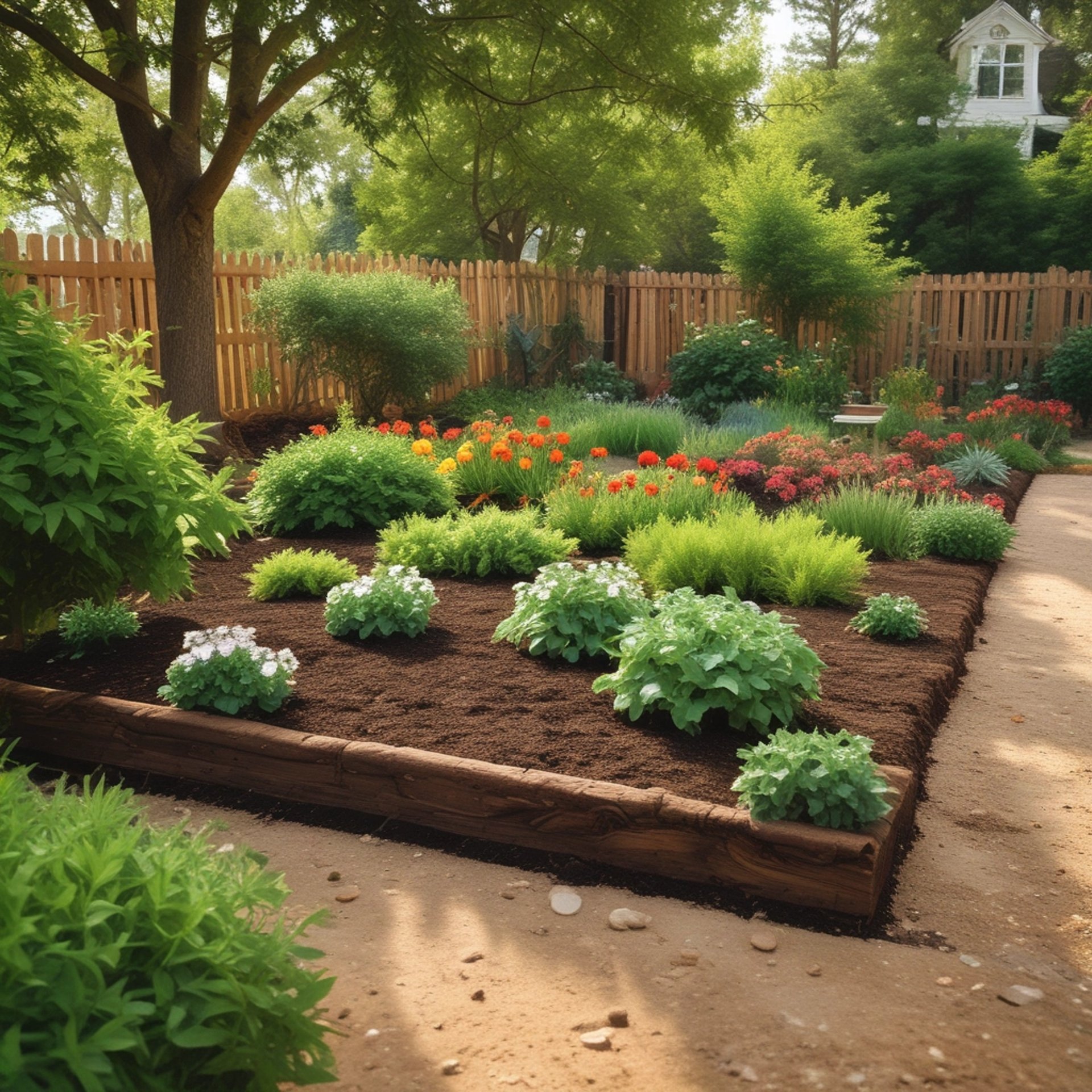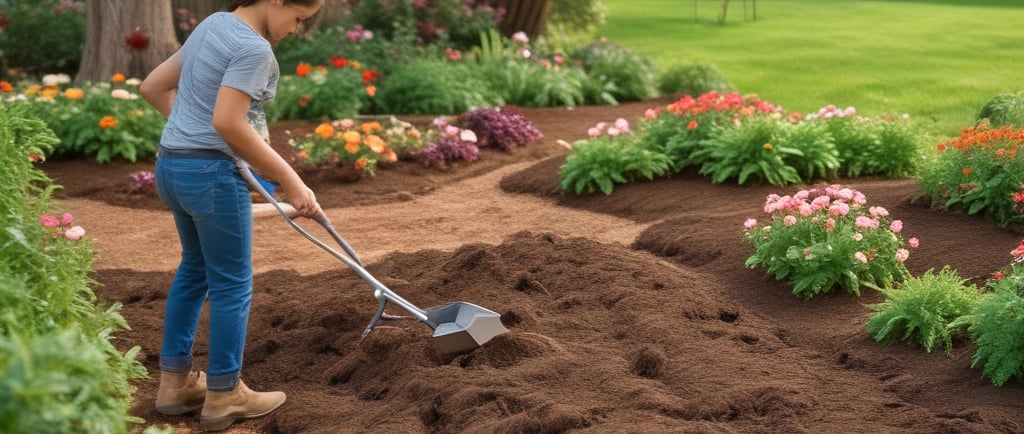🌿 GROWPlantWell – Nurture Nature, Transform Your Space 🌿

🌿 The Basics of Mulches: What, Why, and How to Use Them in Your Garden
Learn the basics of mulches, their types, benefits, and how to use them to improve soil, retain moisture, suppress weeds, and grow healthier plants.
Rashid Saleem
8/7/20253 min read


🪴 What Is Mulch?
Mulch is a protective layer of material spread over the soil surface in gardens, landscapes, or pots. It helps retain moisture, suppresses weeds, regulates soil temperature, and improves soil health.
Mulch can be either:
Organic (natural, decomposes over time – e.g., straw, bark, compost), or
Inorganic (non-decomposing – e.g., plastic sheets, gravel, pebbles).
✅ Why Use Mulch in the Garden?
Mulching is one of the easiest and most effective gardening techniques with multiple benefits:
1. Moisture Retention
Reduces water evaporation and keeps soil moist longer, cutting down the need for frequent watering.
2. Weed Suppression
Acts as a natural barrier, blocking sunlight and reducing weed growth significantly.
3. Soil Temperature Control
Keep roots cool in summer and warm in winter, protecting plants from temperature extremes.
4. Improves Soil Health
Organic mulches break down and enrich the soil with nutrients over time.
5. Erosion Control
Protects the soil from wind and rain, reducing runoff and maintaining soil structure.
6. Enhances Garden Aesthetics
Bark chips, pebbles, and decorative mulches add a neat, finished look to any garden space Types of Mulch: Organic vs. Inorganic
🌿 Organic Mulches (Biodegradable)
Straw or Lucerne Hay: Great for vegetable beds, breaks down quickly.
Wood Chips or Bark: Long-lasting, ideal for flower beds and around trees.
Compost: Enriches the soil with nutrients and beneficial microbes.
Grass Clippings: High in nitrogen; best in thin layers.
Shredded Leaves: Readily available, improves soil structure and fertility.
🪨 Inorganic Mulches (Non-biodegradable)
Gravel or Pebbles: Durable and decorative, great for dry or modern gardens.
Plastic Sheeting: Used in commercial farming to suppress weeds and warm soil.
Landscape Fabric: Prevents weeds when used under decorative mulch or gravel.
📌 Best Mulch for Different Areas
What is the best mulch for vegetables, flowers, or trees?
The best mulch depends on where you're using it:
Vegetable Gardens: Use straw, compost, or grass clippings for quick nutrient release and easy digging.
Flower Beds: Choose bark mulch or shredded wood for an attractive look and long-lasting weed suppression.
Around Trees and Shrubs: Wood chips or coarse bark work best for root insulation and moisture control.
Pots and Containers: Use a thin layer of compost, coconut husk, or small pebbles to retain moisture.
Garden Paths: Gravel, stones, or landscape fabric with mulch on top offers durability and a clean look.
🧤 How to Mulch Your Garden – Step-by-Step
1. Prepare the Soil:
Remove weeds and water the soil thoroughly before applying mulch.
2. Choose the Right Mulch:
Match your mulch type to the plant or garden area (refer to section above).
3. Apply Evenly:
Spread mulch in a 5–10 cm (2–4 inch) layer. Avoid over-mulching, which can suffocate roots.
4. Keep Space Around Stems:
Leave a 5–10 cm gap around plant stems or tree trunks to prevent rot and pests.
5. Maintain and Replenish:
Organic mulch decomposes—reapply or top up every 6–12 months.
🚫 Common Mulching Mistakes to Avoid
“Mulch volcanoes”: Piling mulch against tree trunks can cause rot and pest problems.
Over-mulching: Too thick a layer can block air and water from reaching roots.
Using diseased or contaminated materials: This can spread fungi, weeds, or pests.
Poor drainage: Mulch on poorly drained soil may trap moisture and cause root rot.
🤔 FAQs About Mulching
Q: When is the best time to mulch?
A: Apply mulch in spring to conserve moisture and suppress weeds, or in autumn to protect roots from winter cold.
Q: Can I mulch over weeds?
A: No. Always remove weeds first. Otherwise, they may still grow underneath and spread.
Q: How much mulch should I use?
A: 5–10 cm (2–4 inches) is ideal. Too little won’t block weeds; too much may smother plants.
Q: Is mulch safe for pets?
A: Most natural mulches are safe. Avoid cocoa mulch, which can be toxic to dogs.
Q: Can mulch attract pests?
A: Organic mulch may attract bugs, but proper spacing and air circulation help prevent infestations.
Q: Does mulch decompose?
A: Yes—organic mulch breaks down and improves soil; inorganic mulch does not decompose.
Mulch is one of the most cost-effective, low-effort, and high-reward techniques every gardener should use. Whether you’re looking to save water, grow healthier plants, improve soil, or beautify your space, mulch is your best friend.
✅ Start small: Try mulching one garden bed this week and see the difference in moisture, weed control, and plant health!